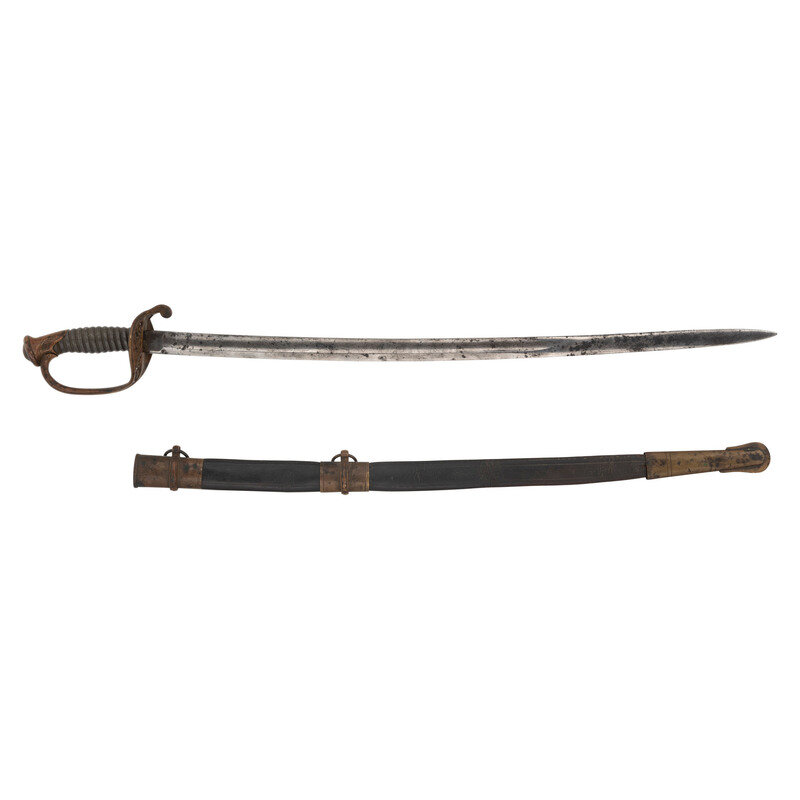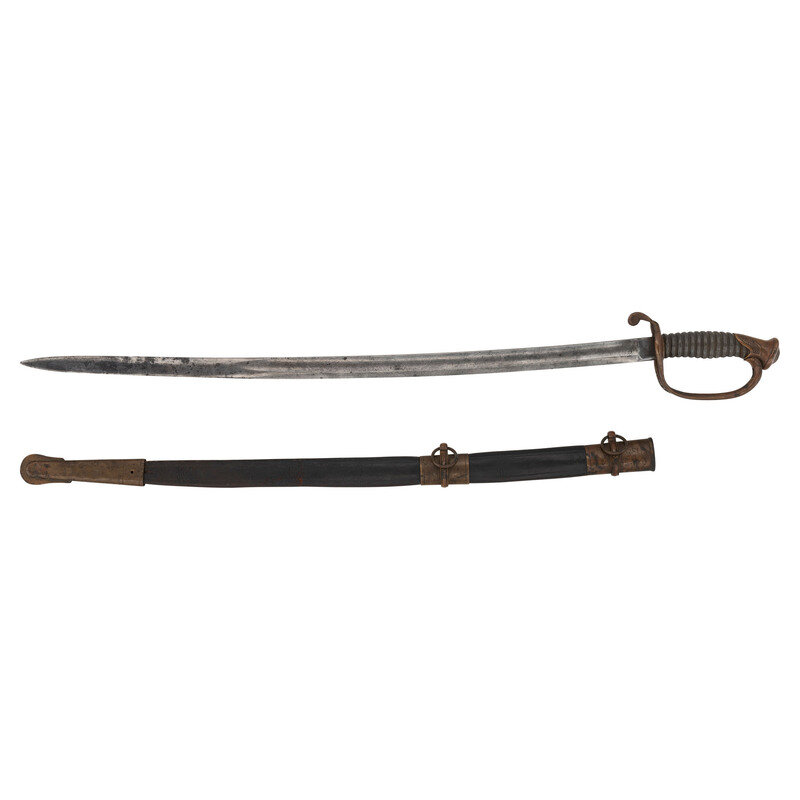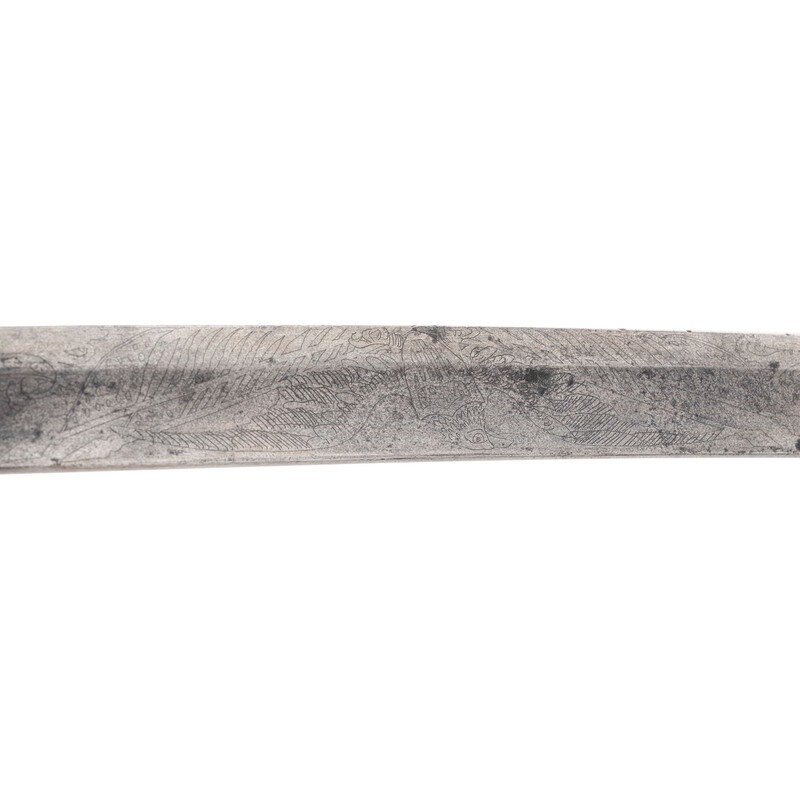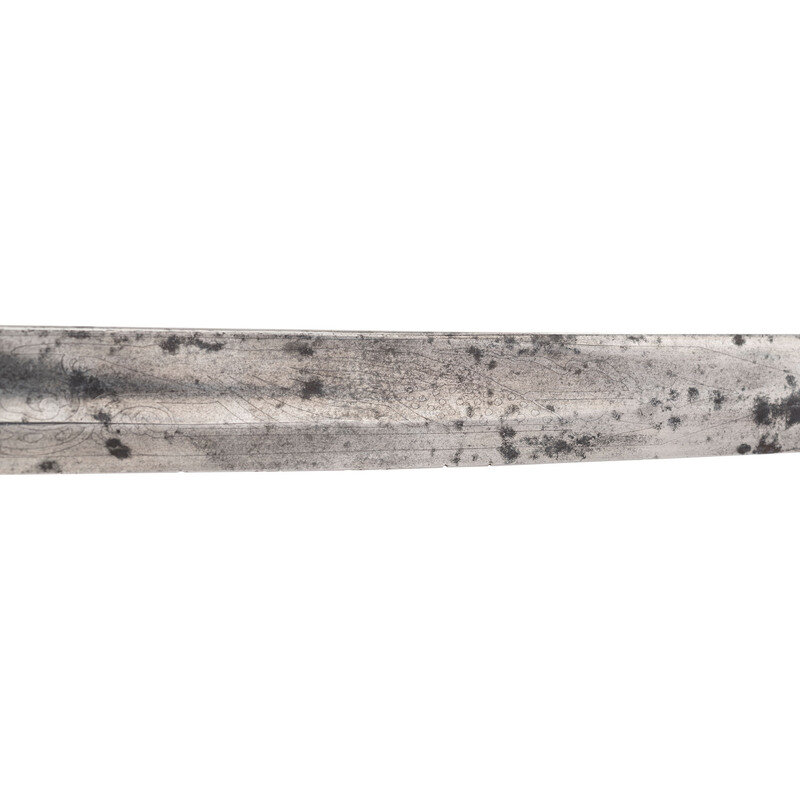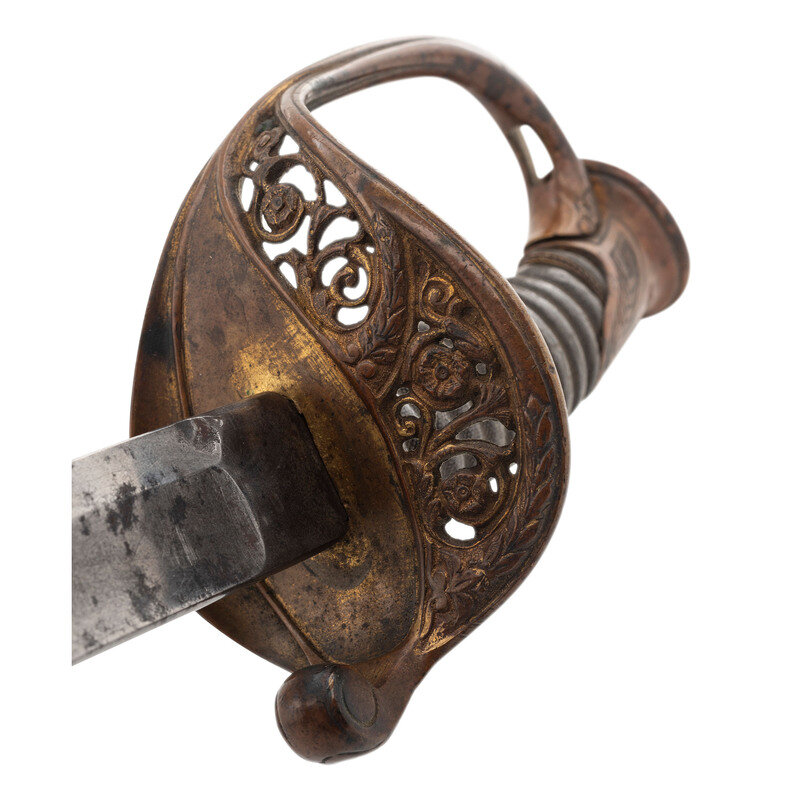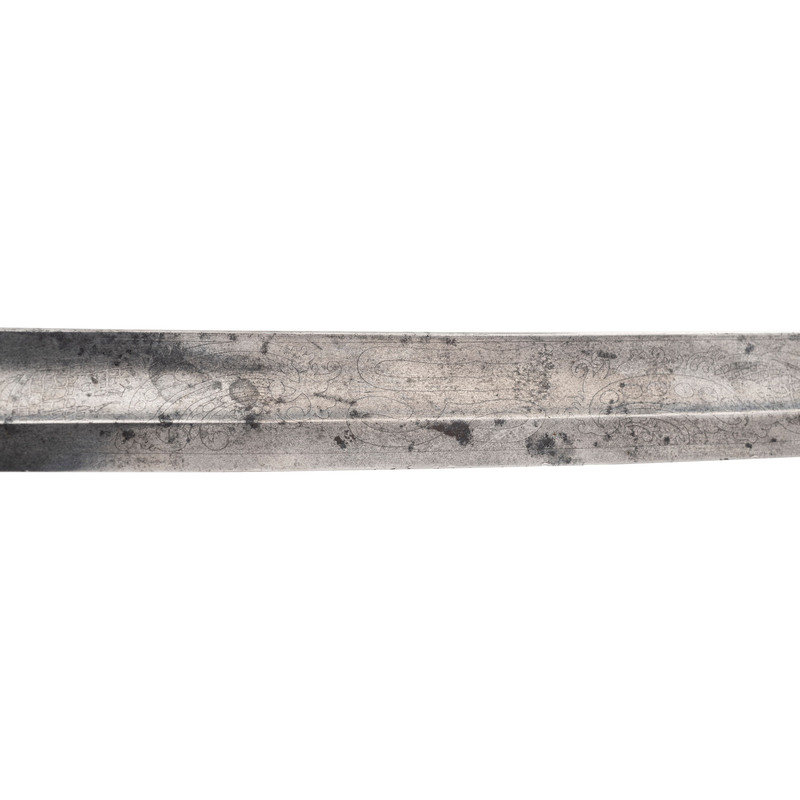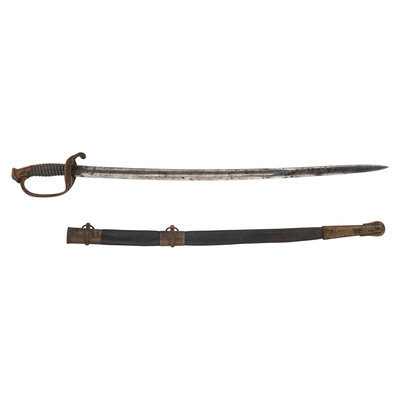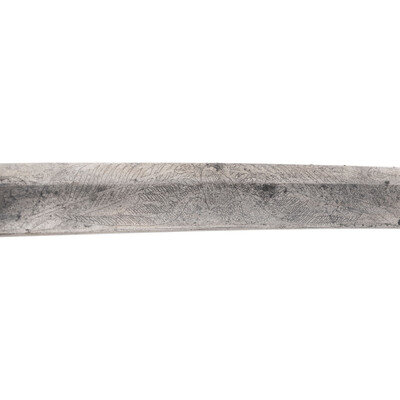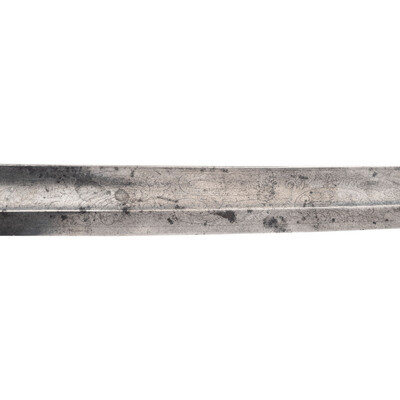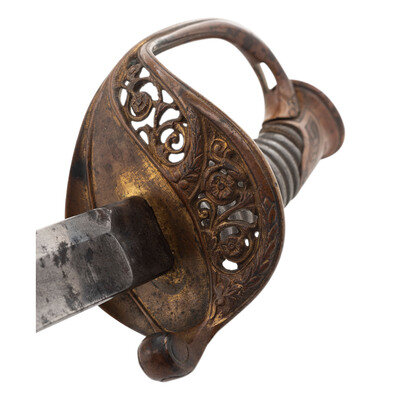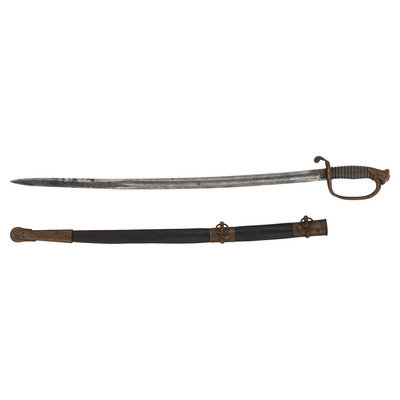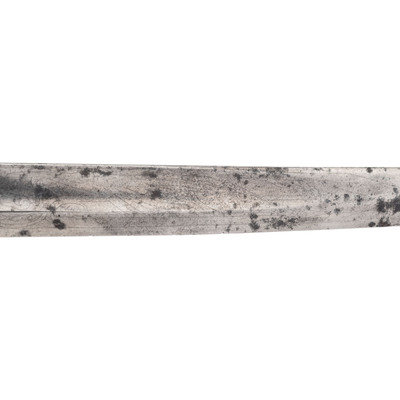30.25" slightly curved singled-edged spear point blade with 19" stopped median fuller. Blade 1.05" wide at ricasso. Overall length 36.125" with a 5.75" hilt. Gilt brass guard with standard foot officer's floral decorations, wood grip with grooved pewter wrap textured to simulate shark skin and originally with thirteen wraps of multi-strand wire. Blade with nominally 18" etched panels depicting floral motifs, martial and patriotic themes, panoplies and trophies of arms, a spread-winged eagle on the reverse and a US on the obverse. No maker or retailer mark is visible, although Tomes, Son & Melvain are known to have used a textured soft metal grip wrap as found on this example on some of the swords that they retailed. Sword is accompanied by its gilt brass mounted leather scabbard with dual incised line decorations along the front and rear edges and top seamed construction. The reverse of the upper mount is engraved: Presented to/Lieut. Jos. W. Spaulding/by/Co. A./19th Me. Regt.
Joseph W Spaulding (1841-1919) was 21 years old when he joined the 19th Maine Volunteer Infantry and was commissioned a 1st lieutenant in Company A on August 25, 1862. He was listed as a "sawyer of lumber" in the 1860 Census. The newly formed regiment moved to the defenses of Washington at the end of August 1862 and then to Harpers Ferry. It was then attached to the 1st Brigade of the 2nd Division of the 2nd Corps of the Army of the Potomac and moved to Warrenton, VA. From there it marched to Falmouth and then participated in the Battle of Fredericksburg. The regiment participated in Burnside's "Mud March" in January of 1863 and fought at Maryes Heights in Fredericksburg, Salem Heights and Banks Ford on May 3 and 4. They participated in the Gettysburg Campaign and earned a reputation for hard fighting on July 2 and 3.
Along with the 1st Minnesota, the 19th Maine was integral in preventing a collapse of the Union line on Cemetery Ridge after Sickels Division of the 3rd Corps was driven from the field. The following day, the 19th Maine was located only yards from the "High Water Mark" of the Confederacy along the ridge and saw heavy fighting during Pickett's Charge. The regiment finished 1863 with the Bristoe Campaign, including fighting at Bristoe Station and the Mine Run Campaign. The 1864 fighting season opened with Grant's Overland Campaign, where the 19th Maine fought at the Wilderness, Spotsylvania, Cold Harbor and the beginning of the Siege of Petersburg between May and mid-June. The regiment was in reserve at the Battle of the Crater, but fought numerous other small actions associated with the Petersburg Campaign, including at the Jerusalem Plank Road, Deep Bottom, Strawberry Plains, Ream's Station, Boydton Plank Road and Hatcher's Run. During 1865 the regiment participated in the Appomattox Campaign fighting at Sailor's Creek and High Bridge, and then Lee's Surrender. The regiment was discharged on June 7, 1865.
During the course of the war, Lt. Spaulding was promoted to captain of Company A in 1863 and on December 2, 1864 was made Lt. Colonel of the regiment. His obituary noted that he participated in 20 engagements during the war. After the war Spaulding worked as a lawyer, having attended Bowdoin College where Gettysburg hero Joshua Lawrence Chamberlain had taught and would later be president. Spaulding served five years in the Maine legislature and saw service on the staffs of two Maine governors, including Chamberlain. Spaulding died at the age of 78 in 1919, having lived to see not only the carnage of Gettysburg first hand, but the carnage of the Great War as reported in the news.
